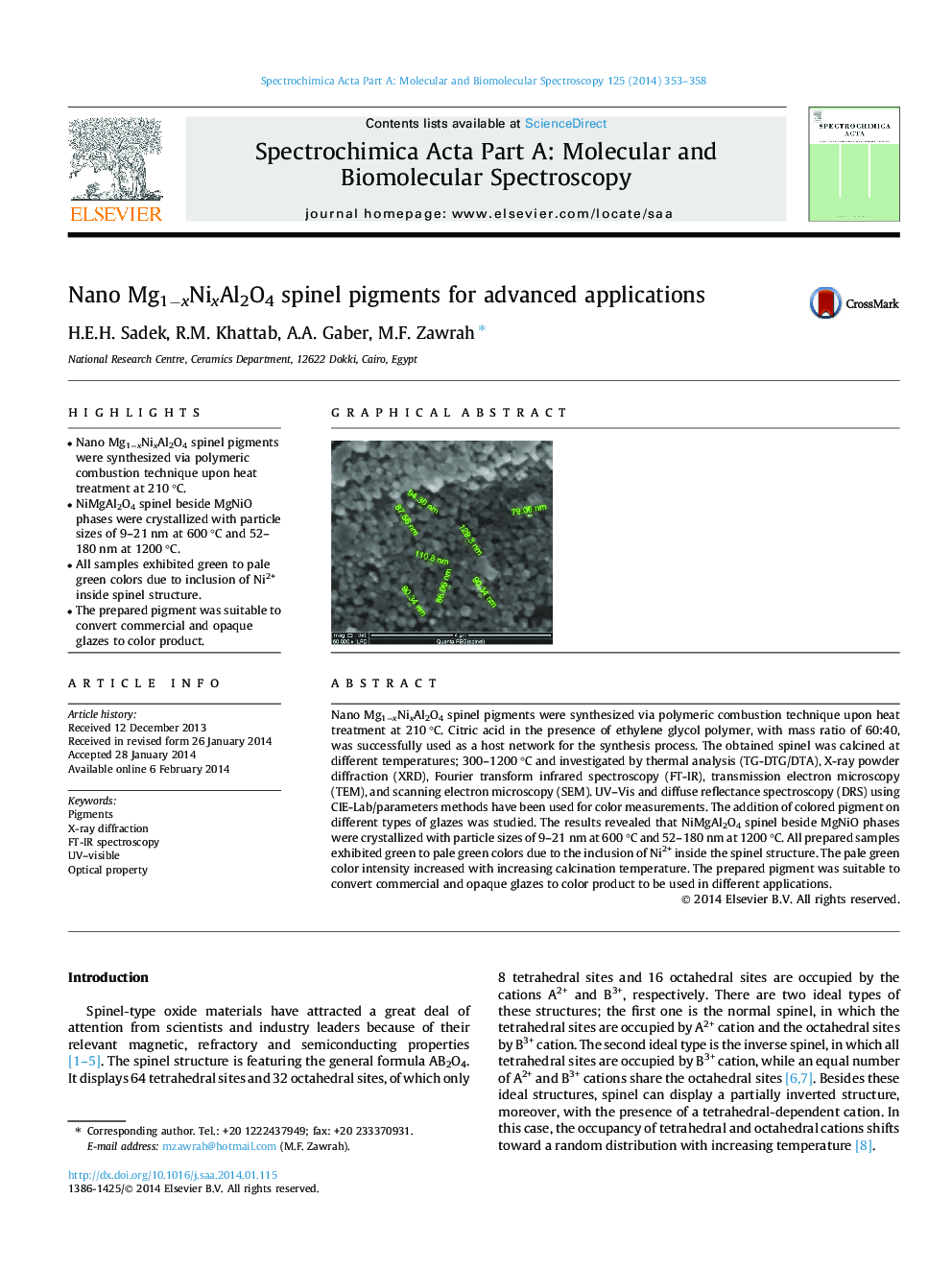| Article ID | Journal | Published Year | Pages | File Type |
|---|---|---|---|---|
| 1230190 | Spectrochimica Acta Part A: Molecular and Biomolecular Spectroscopy | 2014 | 6 Pages |
•Nano Mg1−xNixAl2O4 spinel pigments were synthesized via polymeric combustion technique upon heat treatment at 210 °C.•NiMgAl2O4 spinel beside MgNiO phases were crystallized with particle sizes of 9–21 nm at 600 °C and 52–180 nm at 1200 °C.•All samples exhibited green to pale green colors due to inclusion of Ni2+ inside spinel structure.•The prepared pigment was suitable to convert commercial and opaque glazes to color product.
Nano Mg1−xNixAl2O4 spinel pigments were synthesized via polymeric combustion technique upon heat treatment at 210 °C. Citric acid in the presence of ethylene glycol polymer, with mass ratio of 60:40, was successfully used as a host network for the synthesis process. The obtained spinel was calcined at different temperatures; 300–1200 °C and investigated by thermal analysis (TG-DTG/DTA), X-ray powder diffraction (XRD), Fourier transform infrared spectroscopy (FT-IR), transmission electron microscopy (TEM), and scanning electron microscopy (SEM). UV–Vis and diffuse reflectance spectroscopy (DRS) using CIE-Lab/parameters methods have been used for color measurements. The addition of colored pigment on different types of glazes was studied. The results revealed that NiMgAl2O4 spinel beside MgNiO phases were crystallized with particle sizes of 9–21 nm at 600 °C and 52–180 nm at 1200 °C. All prepared samples exhibited green to pale green colors due to the inclusion of Ni2+ inside the spinel structure. The pale green color intensity increased with increasing calcination temperature. The prepared pigment was suitable to convert commercial and opaque glazes to color product to be used in different applications.
Graphical abstractFigure optionsDownload full-size imageDownload as PowerPoint slide
